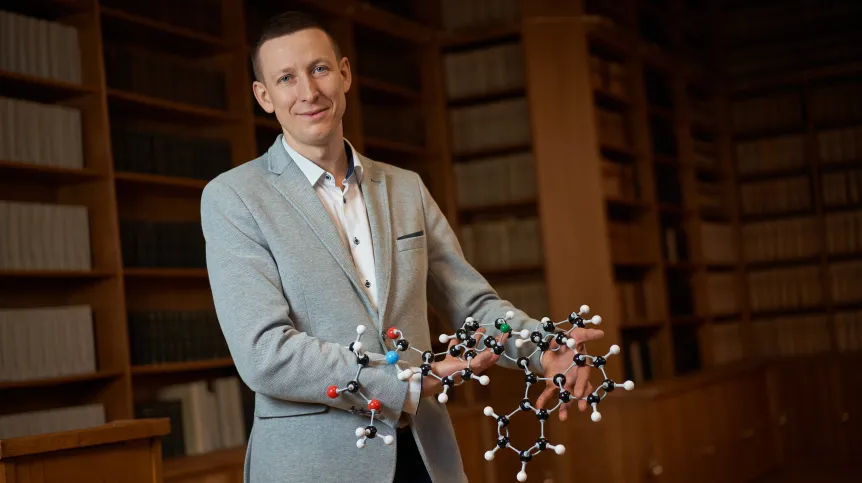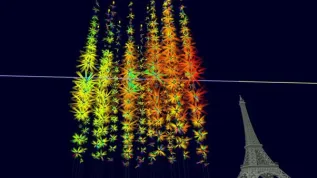
In a mirror image of our world, water contaminated with cyanobacteria could be non-toxic and cumin could smell like mint, says Dr. Piotr Garbacz from the University of Warsaw, whose research on chiral molecules will be financed with a grant from the European Research Council (ERC). The results may affect the classification of various chemical compounds and the assessment of their therapeutic effects.
The group of 397 laureates Starting Grant 2021 includes eight scientists working in Polish scientific centres. This is a record-breaking edition for Poland. One of the winners is Dr. Piotr Garbacz from the Faculty of Chemistry at the University of Warsaw. The university reports on his research in a press release.
The chemist specialises in the interactions of nuclei of atomic chiral molecules with magnetic and electric fields. In the ERC- financed project, like Alice from Lewis Carroll's novel, he wants to explore the world 'through the looking-glass'.
Biological molecules can occur in two forms, like our hands or feet. The right glove does not fit the left hand and the left shoe does not fit the right foot. Molecule's property that manifests itself in the fact that it does not match its mirror reflection is called chirality, explains Dr. Piotr Garbacz, quoted in the University of Warsaw press release.
It turns out that most molecules of the biological significance are chiral, including many drugs. Mirror images of molecules can have very different properties.
For example, in an exact mirror image of the world, for example, a molecule responsible for water contaminated with cyanobacteria can be neutral to humans. Cumin could smell like mint, and mint like cumin. The same molecule is responsible for the scent of both plants, but mint has its enantiomer. Interior organs of a fruit fly are oriented in a certain way. After replacing the corresponding insect's gene during an experiment, its organs changed their orientation, becoming mirror reflections of the original version, the researcher describes.
'A special tool is necessary to study chiral objects. Under biological conditions, known spectroscopic tools facilitate the differentiation of enantiomers, but only limited data with atomic resolution is obtained. On the other hand, NMR spectroscopy is normally blind to chirality but it allows for a look into the structure of a molecule. My aim is to combine these two advantages', Dr. Garbacz explains.
The researcher intends to modify the magnetic NMR so that, in addition to measuring the distance between atoms and their angles, it also allows to determine the chirality of molecules.
'Normal magnetic resonance involves placing the nucleus in a strong magnetic field. I want to add an electric field. As a result, the resonance will be able to detect chirality', he explains.
This will lead to the development of a new branch of molecular spectroscopy, nuclear magnetoelectric resonance (NMER), that will allow to study molecules in their natural conditions. In contrast to standard methods used in NMR, the observation NMER effects does not require a chemical modification of the sample. As a result, the method has many potential applications, including analytical chemistry (determination of optical purity, separating complex mixtures of chiral substances), biochemistry (studies of interactions between chiral molecules), and pharmacy (diagnostic imaging, drug testing).
'My plans include checking with this tool whether medical MRI could be enhanced to also show chiral molecules and their distribution in a human body', adds Dr. Garbacz.
In relation to drugs, enantiomers of molecules can cause a different therapeutic effects. 'The most-cited example is thalidomide. One enantiomer of this substance is used as a calming agent for pregnant women. Its mirror reflection results in genetic damage of the foetus, disrupting the development of the child's limbs. Before this difference was discovered, drugs containing both enantiomers had been prescrived to pregnant women to improve their well-being, without awareness that the other enantiomer is a teratogene', says Dr. Garbacz.
Research on molecule chiralilty may therefore affect the classification of various chemical compounds and the assessment of their therapeutic effects.
PAP - Science in Poland
ekr/ kap/
tr. RL













